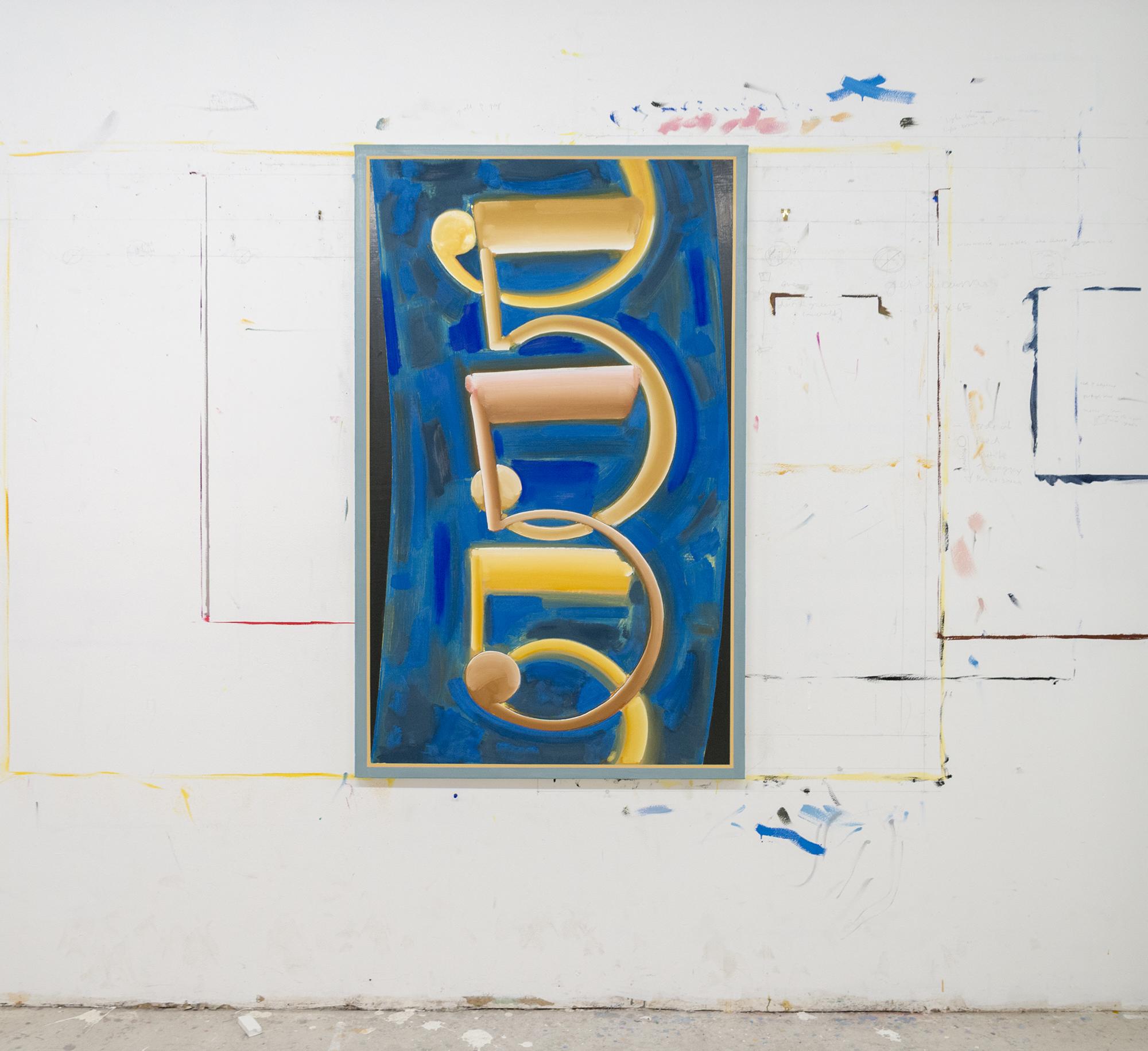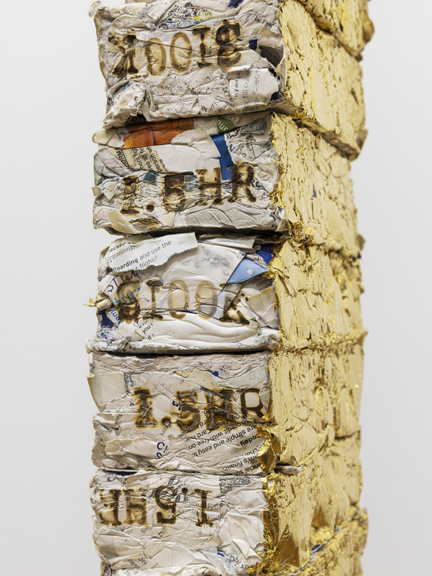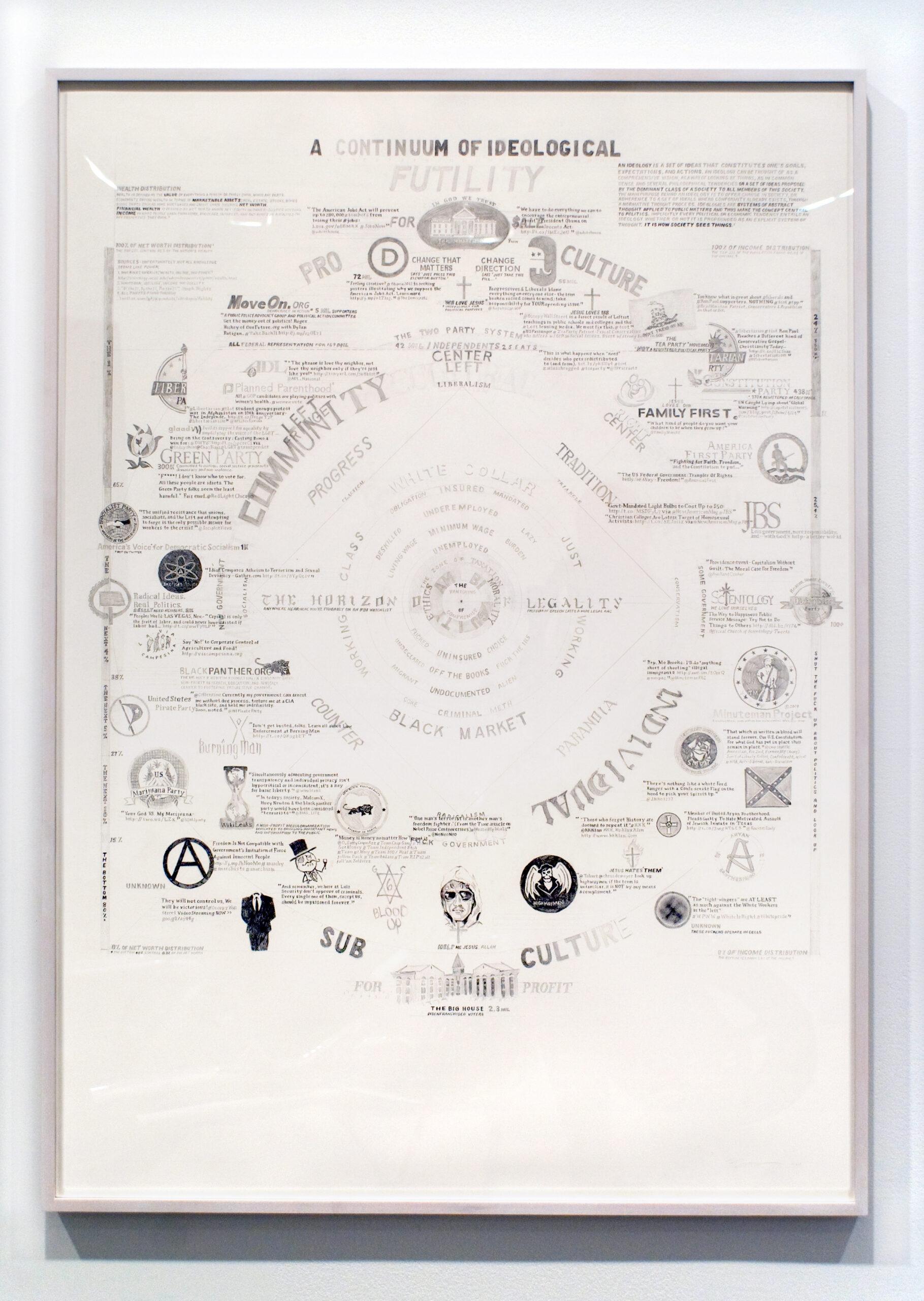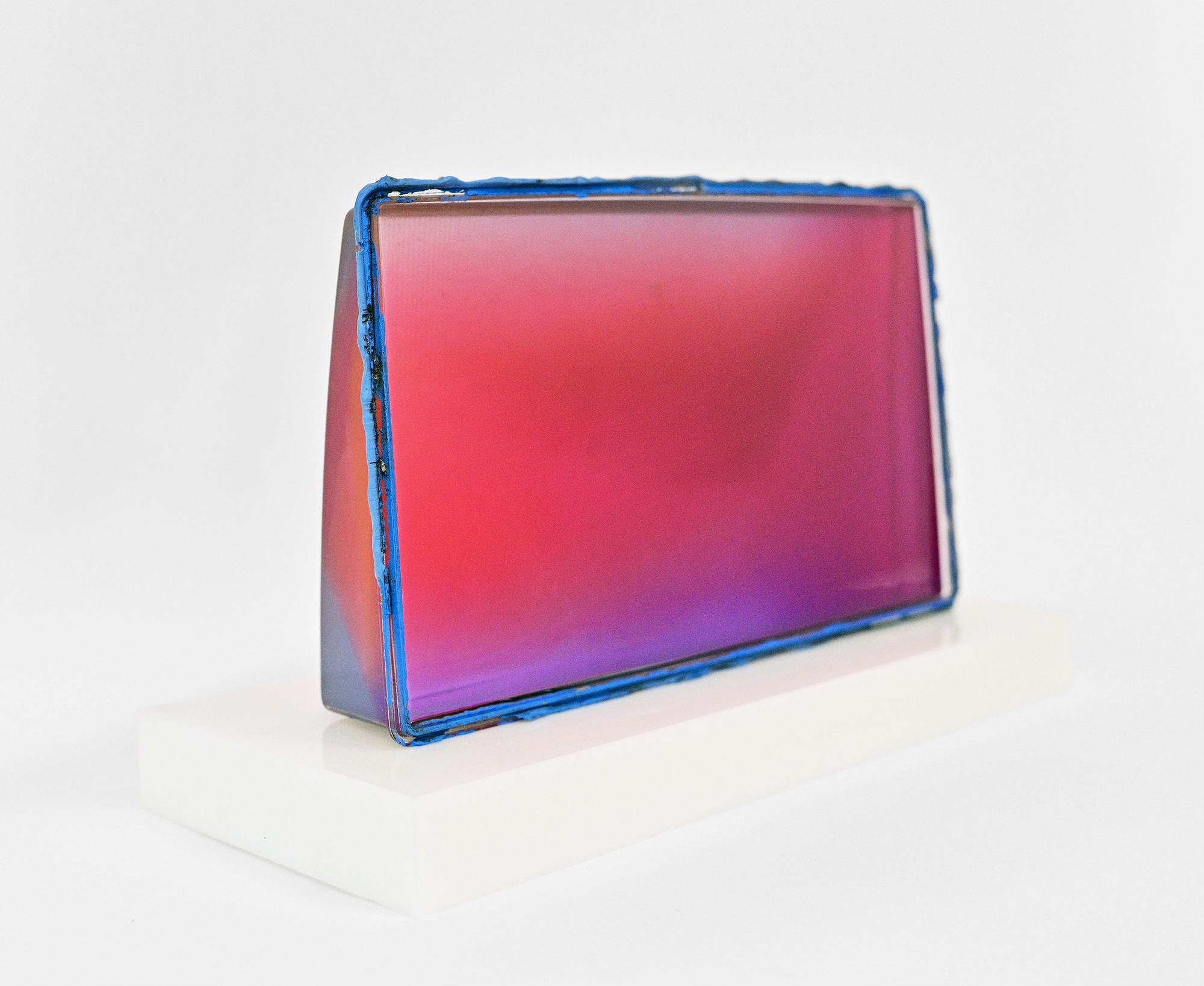Whitehot Magazine
October 2025
"The Best Art In The World"
"The Best Art In The World"
October 2025
How Zero Art Fair Draws from Blockchain Thinking
By KEN KRANTZ August 13, 2025
After its 2024 debut in a rustic Elizaville barn during Upstate Art Weekend, Zero Art Fair’s move to Manhattan set the stage for new relationships by flinging the doors wide open. Suddenly, the applicant pool for free works included the many young people who came to the city chasing its art scene, like Connor.
Chosen to select a work, Connor is a librarian with an art-world past and unshakable love for all things creative. Still, he had never owned, installed, or insured a piece of serious artwork before Zero Art Fair introduced him to “Five” by Luke O’Halloran.
 "Five" by Luke O'Halloran (2019).
"Five" by Luke O'Halloran (2019).
“I took home ‘Five,’ by Luke O’Halloran, for a number of reasons. His work focuses on themes of gambling and risk (Five is supposed to evoke the spinning numbers on a slot machine), which resonated with me due to the uncertain yet exciting nature of this art fair,” Connor tells me. “I have no clue who will end up possessing this painting after the five year period, and that’s kind of thrilling."
At Zero Art Fair, a contract grants collectors ownership vesting after five years while guaranteeing artists royalties, resale rights, and continued connection to their work. Obligations involving shared rights and responsibilities are baked into the agreement, keeping the artist in the picture long after the honeymoon phase fades.
Zero Art Fair is as self-aware as its officiants, artists whose work has long interrogated the class dynamics of the art world: Jennifer Dalton and William Powhida.
Dalton’s portfolio is full of fantastical introspection on market dynamics in and beyond the art world. In October 2024, The Brooklyn Museum showed Dalton’s incredible work entitled “Pillar of Debt,” a towering sculpture made of “a column of forty-eight pulped paper bricks made from my collected credit-card offer mailings…a cumulative sum of nearly five million dollars in potential debt.” The bricks can burn for at least 1.5 hours each.
 "Pillar of Debt" by Jennifer Dalton (2023).
"Pillar of Debt" by Jennifer Dalton (2023).
William Powhida is engaged with similar ideas in his work. For example, “The True Artist (Worker)” is a paper works series questioning cultural and economic conventions grounding artists. Powhida has often seen his work resold without notice or royalties. “I’ve had some work come up for sale at auction,” he recalls. “I had a Google alert for a piece that came up for sale in Chicago. That’s the main way artists can track that.”
When most assets change hands, the sale is final. A builder or architect does not receive royalties on home resales. The market resale value of that home will fluctuate based on external conditions. Art, specifically when the artist is still living, functions differently.
The living artist’s career advancement will impact the value of a piece you own. The price of an early work grows exponentially on the resale market if that artist puts on a solo show at the Whitney or wins a Silver Lion at the Venice Biennale. The artist will never share materially in that value, despite their direct impact on appreciation.
 "The Continuum of Ideological Futility" by William Powhida (2011)
"The Continuum of Ideological Futility" by William Powhida (2011)
The Zero Art Fair contract builds on Powhida’s project Store-to-Own, wherein Powhida combats an exclusion from downstream value by distributing his stored works to a public composed of private collectors and retains rights under a contract written by Amy Whitaker and Alfred Steiner.
Dr. Whitaker is NYU’s profound artist advocate. She is an associate professor of Visual Arts Administration and founder of the Art, Equity, and Democracy Lab, which treats civic construction as a collective art project. In her academic capacity, Dr. Whitaker has written extensively on blockchain use cases. She gave a TEDx talk on the subject. Much of her work encourages technologists to build realities at the edge of the innovation’s humanist possibilities.
Alfred Steiner is an artist and lawyer specializing in art, law, and technology. He has shown his work in galleries across the world, contributed to a number of amicus briefs submitted to the Supreme Court on behalf of artists, and pioneered much of the legal work defining trademark law in digital art contexts, including NFTs and Blockchain.
With such amazing thinkers involved, it’s possible to interpret the Zero Art Fair contract as a performance of a pro-blockchain humanism in practical application. “Royalties tracking is like a low-tech blockchain,” explains Jennifer Dalton. “There’s a public ledger on the website, and every work has a label identifying the contract with a link and details.”
Zero Art Fair reflects the technology’s core democratic impulses of transparency, traceability, and shared authorship. In practice, it bridges the notoriously opaque legacy art world with new modes of thinking, offering collectors and artists a lively, mutually beneficial experience.

"P.O.M.B." by Emily Weiskopf (2023).
The results speak for themselves. As of the Monday before the fair’s public opening, “179 works were placed with a total retail value of $537,500, with 14 additional works on hold.” Artists were paid a $100 honorarium for participation, and sponsorships from The FLAG Art Foundation and the Gagosian secured a wonderful space in Chelsea, among other benefits.
Zero Art Fair staged something rare: an engaging public conversation about the possibility of better legal rights for artists. Moreover, the hosts are drawing in collectors who care deeply about the work.
A good steward, our collector Connor is now working towards insuring his piece. His renters insurance needs documentation of the work’s value, which is tricky for a piece that has never been sold. He reached out directly to O’Halloran. Together, they’re drafting a letter comparing "Five" to similar works that have sold.
“Getting to talk to the artist about his work in this way is another benefit of this fair,” Connor says.
The contract negotiates a hopeful, beautiful relationship between artists and collectors based in blockchain thinking. Rooted in optimism, there’s commitment and paperwork alongside the promise that the relationship won’t end after the initial moment of attraction. Five years on, the art will still carry both names in the ledger, and the story will still be theirs to tell together.
Hopefully, this model becomes a blueprint. WM

Ken Krantz
Ken Krantz is interested in the intersection of business, culture, and bravery where great artwork emerges. He can be found on Instagram as @G00dkenergy or online at goodkenergy.com.
view all articles from this author








